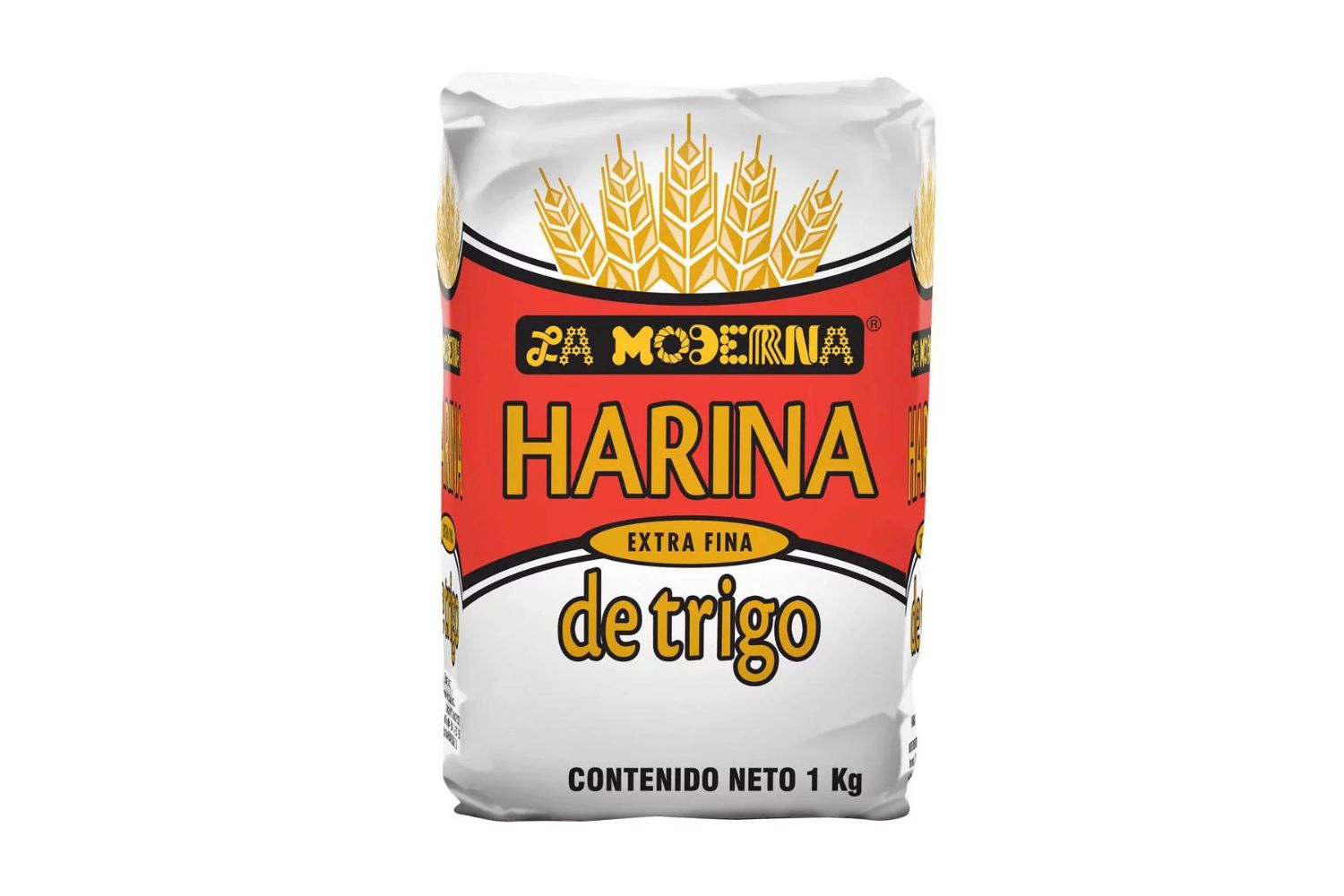
Harina de trigo, or wheat flour, is a versatile ingredient that is widely used in kitchens around the world. Whether you’re baking a cake, making bread, or thickening a sauce, harina de trigo is a staple pantry item that plays a crucial role in many recipes.
But don’t let its commonality fool you – there’s more to harina de trigo than meets the eye. In this article, we will uncover 18 captivating facts about harina de trigo that will not only pique your interest but also enhance your understanding of this essential ingredient. From its fascinating history to its nutritional benefits, you’ll discover the lesser-known aspects of harina de trigo that make it such a valuable component in the world of culinary arts.
Key Takeaways:
- Harina De Trigo, also known as wheat flour, is a versatile ingredient with cultural significance, health benefits, and a key role in baking and cooking worldwide.
- From traditional recipes to exotic dishes, Harina De Trigo offers endless culinary possibilities, making it a staple in kitchens and a source of creativity for chefs and home cooks alike.
The Origins of Harina De Trigo
Harina De Trigo, also known as wheat flour, has been a staple ingredient in many cultures for centuries. From ancient civilizations to modern-day culinary practices, this versatile flour has made its mark in cuisine around the world.
The Different Varieties of Harina De Trigo
Did you know that there are several types of harina de trigo? From all-purpose flour to bread flour, cake flour, and whole wheat flour, each variety has unique characteristics and is suited for specific culinary creations.
Harina De Trigo and its Nutritional Value
Harina De Trigo is not only delicious but also packed with essential nutrients. It is a good source of carbohydrates, fiber, and B vitamins, making it a healthy choice for everyday cooking.
The Role of Harina De Trigo in Baking
Harina De Trigo plays a vital role in the world of baking. Its gluten-forming proteins give structure and elasticity to dough, resulting in fluffy bread, tender pastries, and decadent cakes.
Harina De Trigo in Traditional Recipes
Many traditional dishes from different cultures rely on harina de trigo as a key ingredient. From tortillas in Mexican cuisine to pasta in Italian dishes, this flour adds flavor and texture to various culinary delights.
The Art of Sifting Harina De Trigo
Did you know that sifting harina de trigo is essential in baking? It helps remove lumps, aerates the flour, and ensures a smoother and more even texture in your baked goods.
The Gluten-Free Alternatives to Harina De Trigo
For those with gluten intolerance or celiac disease, there are gluten-free alternatives to harina de trigo available. These include almond flour, coconut flour, and rice flour, which can be used as substitutes in various recipes.
The Versatility of Harina De Trigo
Harina de trigo’s versatility knows no bounds. From savory dishes like fried chicken or tempura to sweet treats like pancakes or cookies, this flour can be used in a wide range of culinary creations.
The Importance of Proper Storage
Properly storing harina de trigo is crucial to maintaining its freshness and quality. It is recommended to keep it in an airtight container in a cool, dry place, away from direct sunlight.
Harina De Trigo as a Thickening Agent
In addition to baking, harina de trigo can also be used as a thickening agent in sauces, soups, and gravies. Its ability to absorb liquids and create a smooth consistency makes it a valuable ingredient in savory dishes.
The Cultural Significance of Harina De Trigo
Harina de trigo holds cultural significance in many countries and is often used in traditional festivals and celebrations. From making dumplings for Lunar New Year to baking bread for religious ceremonies, it brings communities together and symbolizes unity and abundance.
Exploring Exotic Harina De Trigo Recipes
If you’re looking to expand your culinary horizons, try experimenting with exotic recipes that feature harina de trigo. From Indian naan bread to French crepes, these unique dishes will take your taste buds on a global adventure.
The Health Benefits of Whole Wheat Harina De Trigo
Whole wheat harina de trigo offers additional health benefits compared to refined flour. It contains more fiber, vitamins, and minerals, making it a nutritious choice for those seeking a wholesome diet.
The Role of Harina De Trigo in Pasta Making
Pasta lovers rejoice – harina de trigo is the main ingredient in fresh pasta dough. Whether you’re making spaghetti, ravioli, or lasagna, this flour forms the base for creating delicious homemade pasta.
Harina De Trigo Across Different Cuisines
Harina de trigo transcends cultural boundaries and finds its way into various cuisines worldwide. From the fluffy bread of the Mediterranean to the delicate pastries of France, this flour connects us through the universal language of food.
Harina De Trigo and Culinary Creativity
Harina de trigo sparks culinary creativity, allowing chefs and home cooks alike to experiment with different flavors, textures, and techniques. It serves as a blank canvas for creating extraordinary dishes and pushing the boundaries of gastronomy.
Cooking Tips and Tricks with Harina De Trigo
Let your creativity flourish in the kitchen by exploring various cooking tips and tricks with harina de trigo. From achieving the perfect pie crust to making airy pancakes, these techniques will elevate your culinary skills to new heights.
The Enduring Popularity of Harina De Trigo
Through the centuries, the popularity of harina de trigo has remained steadfast. It continues to be a kitchen staple, bringing delight and satisfaction to countless meals around the globe.
Conclusion
In conclusion, harina de trigo, or wheat flour, is a versatile ingredient that plays a crucial role in the world of cooking and baking. From producing fluffy bread to creating mouthwatering pastries, this staple ingredient adds texture, volume, and flavor to various dishes. The process of milling wheat into flour has evolved over centuries, resulting in different types of flour with varying characteristics.Understanding the different types of wheat flour, such as all-purpose flour, cake flour, and bread flour, allows chefs and bakers to select the right kind for their specific culinary needs. Additionally, knowing the nutritional value of harina de trigo helps individuals make informed choices when it comes to their diet and overall health.Whether you’re an aspiring chef, a seasoned baker, or simply a food lover, exploring the fascinating world of harina de trigo opens up a whole new world of culinary possibilities. So, next time you whip up a batch of pancakes, bake a fresh loaf of bread, or indulge in a slice of cake, remember the integral role wheat flour plays in creating those delightful treats.
FAQs
Q: What is harina de trigo?
A: Harina de trigo is the Spanish term for wheat flour. It is made by milling whole wheat grains into powder, resulting in a versatile ingredient used in cooking and baking.
Q: What are the different types of harina de trigo?
A: There are various types of harina de trigo, including all-purpose flour, cake flour, bread flour, whole wheat flour, and gluten-free flour.
Q: Can all-purpose flour be used interchangeably with other types of harina de trigo?
A: All-purpose flour is a versatile option and can generally be used as a substitute for other types of harina de trigo, but it may affect the texture and consistency of the final product.
Q: Is harina de trigo gluten-free?
A: No, harina de trigo contains gluten. Individuals with gluten intolerances or celiac disease should opt for gluten-free alternatives like rice flour or almond flour.
Q: What are some common dishes that use harina de trigo?
A: Harina de trigo is used in a wide range of dishes, including bread, cakes, cookies, tortillas, pasta, pies, and pastries.
Q: What is the nutritional value of harina de trigo?
A: Harina de trigo is a good source of complex carbohydrates, fiber, and various essential minerals like iron and magnesium.
Q: How should harina de trigo be stored?
A: It is best to store harina de trigo in a cool, dry place in an airtight container to maintain its freshness and prevent it from absorbing moisture.
Q: Can expired harina de trigo be used?
A: It is recommended to check the expiration date on the packaging and discard any expired harina de trigo as it may affect the quality and taste of the final product.
Was this page helpful?
Our commitment to delivering trustworthy and engaging content is at the heart of what we do. Each fact on our site is contributed by real users like you, bringing a wealth of diverse insights and information. To ensure the highest standards of accuracy and reliability, our dedicated editors meticulously review each submission. This process guarantees that the facts we share are not only fascinating but also credible. Trust in our commitment to quality and authenticity as you explore and learn with us.


